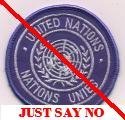How U.S. will hit Iran
LONDON -- A secret crisis meeting of Britain's military and political chiefs has been told President Bush has moved "significantly closer" to launching attacks on Iran's nine nuclear plants.
Both Washington and the International Atomic Energy Agency believe the facilities are now "advanced in providing uranium enrichment and plutonium materials which will be used to provide nuclear bombs." The time frame for this to happen "is within three years at the outside," the meeting was told.
Tactical Tomahawk cruise missiles would be launched from U.S. Navy ships and submarines in the Gulf to target Iran's air defense systems at the nuclear installations. The updated Tomahawks have an onboard facility that allows them to be reprogrammed while in-flight to attack an alternative target once the initial one is destroyed. Each has also a "loitering" capability over a target area to provide damage assessment through its on-board TV camera.
U.S. Air Force B2 stealth bombers, each equipped with eight 4,500-pound bunker-busting bombs, would fly from Diego Garcia, the isolated US Navy base in the Indian Ocean, the Whiteman USAF base in Missouri, and the USAF base at Fairford in Gloucestershire. Each meter-long bomb of hardened steel can penetrate 6 meters of concrete. There would be no ground-force follow-up attacks.
An official who was with Straw at the time of Rice's warning said: "She made it very clear military action was inevitable unless Tehran backed down."
The last time such a meeting was held was in March, 2003, on the eve of the war with Iraq.
In Baghdad Rice had said that "we need to get this settled as soon as possible." The words at the end of her press conference were not developed. But in London they were seen as an indication, a senior Foreign Office source said, "that Washington wants to get the Iraqi agenda off the top spot so it can concentrate on dealing with Iran. Bush is determined to destroy those nuclear sites."
The Blair "War Cabinet" meeting concluded:
•· Apart from the Blair Government who else will support attack on Iran? Definitely Israel. Its three Dolphin Class nuclear submarines are in the Gulf to help target Iran's air defences at the nuclear facilities. The submarines are currently linked by satellite to naval HQ at Tel Aviv. In turn that is linked to the Pentagon.
•· Who else would support the attack? Diplomatic support would probably come from Australia, Poland and possibly Germany, France and Spain. Less certain is the role of other European countries.
[But] if Iran continues to maintain its bellicose attitude and ignores demands made by the UN, the Bush administration will launch military action, either later this year or early in 2007. But certainly not later than the run-up to Bush's final year in office in 2008.
It is a two-phased plan. First U.S. and probably Israeli cruise missiles will destroy defenses around targets. Second, B2 Stealth bombers will hit nuclear plants with bunker-busting bombs. Total mission time in target areas: probably eight hours.
Maryam Rajavi, the president-elect of the National Council of Resistance of Iran: "I do not agree with foreign military intervention. However, if the international community and the Security Council hesitate in adopting a firm policy on Iran, the regime would obtain the only thing it needs to acquire nuclear weapons, namely time. Then we would be facing an Islamic fundamentalist regime, the leading state sponsor of terrorism, armed with nuclear weapons. This would make war inevitable."
Excerpts from the G2 Bulletin. Available by paid subscription only.



































0 Comments:
Post a Comment
<< Home